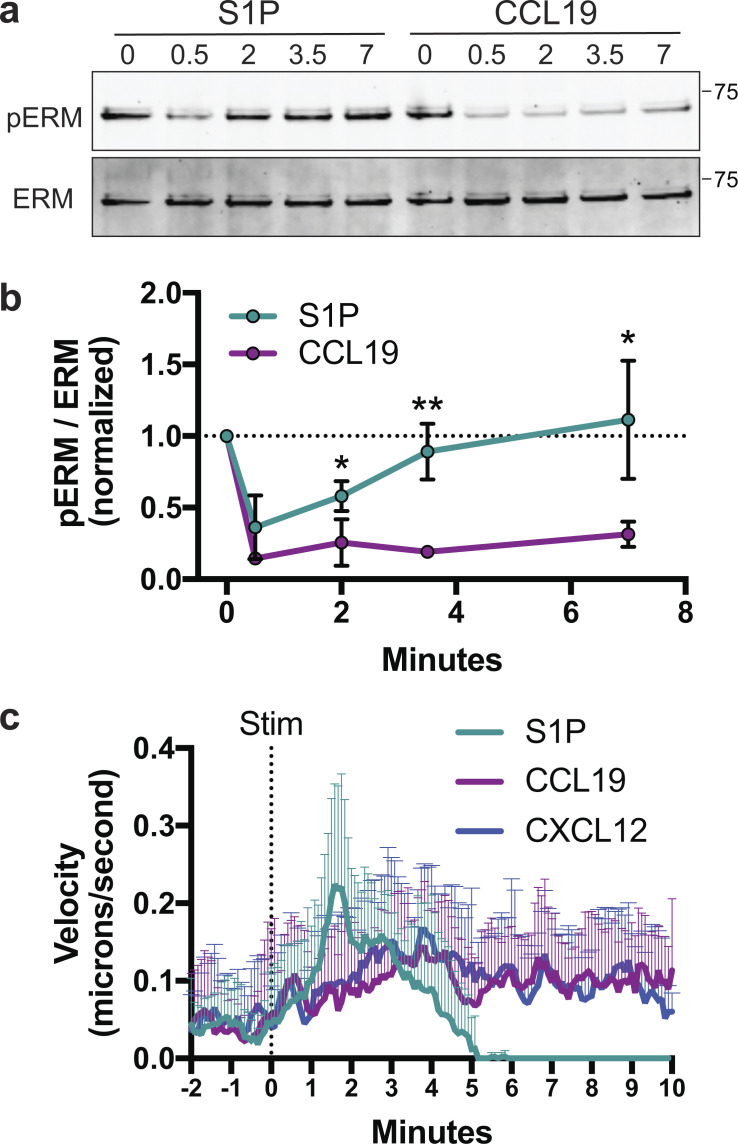Figure 5.
S1P promotes a rapid, highly transient mode of migration. (a and b) ERM dephosphorylation and rephosphorylation. WT naive CD4+ T cells were cultured overnight in media with 10% CS-FBS and then stimulated for 0, 0.5, 2, 3.5, or 7 min with S1P (100 nM) or CCL19 (100 ng/ml), lysed, and immunoblotted for phospho-ERM (pERM; Thr558 for moesin) and total ERM. Quantified band intensities are displayed as the phospho/total ratio. Data are pooled from five independent experiments with means for the S1P and CCL19 group compared at each time point using multiple t tests (two-sided) and the Holm-Sidak correction for multiple comparisons. Data distribution was assumed to be normal, but this was not formally tested. Data are displayed as means ± SD, with a dotted line marking the normalized starting value of 1. (c) Instantaneous velocity following S1P or chemokine stimulation (Stim). WT naive CD4+ T cells (previously cultured overnight in media with 10% CS-FBS) were imaged by DIC microscopy before and after stimulation with S1P (100 nM), CCL19 (100 ng/ml), or CXCL12 (100 ng/ml) and manually tracked at 1-s intervals to determine instantaneous velocity. Averages + SD for 12 representative cells per condition are shown. *, P < 0.05; **, P < 0.01.

